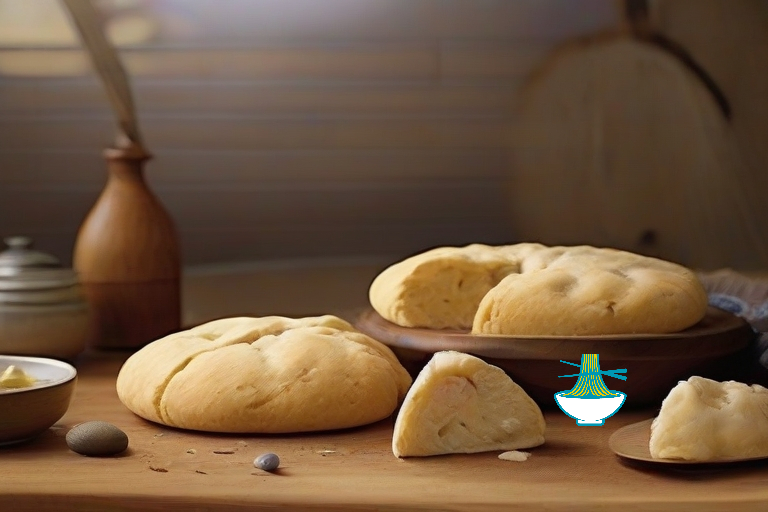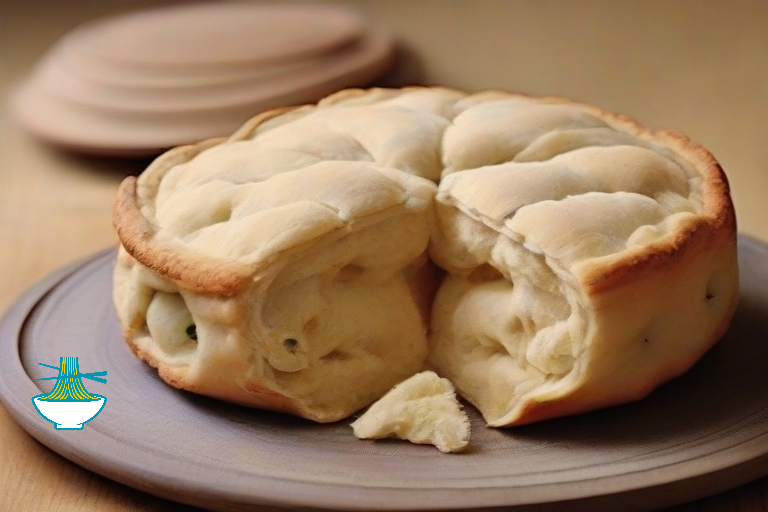Australian Damper, while simple in its ingredients, offers valuable nutritional benefits that contribute to a balanced diet. The main component, flour, is rich in carbohydrates, which provide essential energy for the body. It also contains small amounts of B vitamins, particularly thiamine (B1) and niacin (B3), which support the body's metabolism and nerve function. Additionally, Damper's salt content plays a role in maintaining fluid balance, although it should be consumed in moderation.
Despite being a basic bread, Damper offers an antioxidant benefit when prepared with added ingredients like herbs or seeds. These antioxidants, such as vitamin E, help combat oxidative stress in the body, protecting cells from damage caused by free radicals. Incorporating seeds like sunflower or sesame can boost Damper's nutritional profile, providing healthy fats, vitamins, and minerals that support heart health and overall well-being. Baking Damper in an oven and experimenting with butter or milk as part of the process enhances its taste while maintaining its nutritional value.
Ingredients:
- 3 cups self-raising flour
- 1 teaspoon salt
- 1 cup milk (or water)
- Butter or oil for spreading (optional)
Ingredient Substitutions
- Instead of using butter, you can replace it with olive oil.
- Choose low-fat or skim milk instead of whole milk.
- Use whole-wheat flour instead of white flour.
Instructions:
- Preheat the Oven: Preheat your oven to 200°C (about 400°F).
- Prepare the Dry Ingredients: In a large mixing bowl, combine the self-raising flour and salt. You can sift the flour if you prefer a lighter texture.
- Create a Well: Make a well in the center of the flour mixture. This is where you'll pour in the liquid.
- Add Liquid: Gradually add the milk (or water) to the well. Use a wooden spoon or your hands to mix the ingredients together until you form a soft dough. Be careful not to overmix; just combine until the dough comes together.
- Knead the Dough: Turn the dough out onto a lightly floured surface. Knead it gently for a few minutes until it becomes a smooth ball.
- Shape the Damper: Place the dough onto a lightly greased or lined baking tray. Shape it into a round, flat loaf, about 5-6 cm (2-2.5 inches) high.
- Cut a Cross: Use a sharp knife to cut a cross into the top of the damper. This helps it cook evenly.
- Bake: Place the tray in the preheated oven and bake for approximately 30-40 minutes, or until the damper is golden brown on top and sounds hollow when tapped on the bottom.
- Cool and Serve: Allow the damper to cool on a wire rack for a few minutes. Serve warm, sliced, and spread with butter or your favorite topping.
- Enjoy: Embrace the simple and rustic flavors of Australian Damper, perfect for sharing around a campfire or as a side to hearty meals.
Feel free to experiment with variations like adding grated cheese, herbs, or dried fruits to the dough for a unique twist!
Note:
- Excessive Salt: Eating too much salt in your diet can increase your risk of high blood pressure, which can lead to cardiovascular problems. To reduce this, it is important to stick to the recommended daily salt intake guidelines.
- Excess butter or oil: The fat in butter or oil can add richness to bread, but too much of it can increase your intake of saturated fat (in butter) and calories, which can contribute to weight gain and heart disease if consumed regularly in large amounts.
Frequently Asked Questions
What are the best ways to store Damper?
- Damper is best stored in an airtight container to keep it fresh. You can also wrap it in a clean kitchen towel or plastic wrap. For longer storage, it can be refrigerated for a few days or frozen for up to three months.
Can I add different ingredients like cheese or meat to the Damper?
- Yes! You can add various ingredients to enhance the flavor and texture of your Damper. Adding grated cheese or herbs will give it a savory twist, while dried fruits like raisins or dates can provide sweetness. For a heartier version, try incorporating diced ham or bacon.
Can I use regular flour instead of self-raising flour?
- Yes, you can. If you don't have self-raising flour, you can use plain flour and add 1-2 teaspoons of baking powder for every cup of flour to help it rise.
What are the different ways to cook Damper (e.g., oven or campfire)?
- Traditionally, Damper was baked over a campfire, which gives it a rustic, smoky flavor. You can also bake it in a conventional oven at 200°C (400°F) for 30-40 minutes. Alternatively, you can cook it on a stovetop by using a heavy pan with a lid, similar to making a Dutch oven bread.
How can I make this recipe healthier?
- To make the recipe healthier, use whole wheat flour for added fiber, substitute olive oil for butter, and use low-fat milk instead of whole milk. You can also experiment by adding seeds like chia or flaxseed to improve its nutrient profile, especially for heart health.

Nutritional Values
Nutritional values can vary based on specific brands and types of ingredients used.
1. Self-Raising Flour (3 cups):
- Calories: Approximately 1,200 kcal
- Protein: Approximately 30g
- Carbohydrates: Approximately 240g
- Dietary Fiber: Approximately 9g
- Fat: Approximately 3g
benefits: A good source of carbohydrates, essential for energy. Contains small amounts of protein and fiber.
2. Salt (1 teaspoon):
- Calories: Negligible
- Sodium: Approximately 2,300 mg (daily recommended limit for adults is around 2,300 mg)
benefits: While consumed in small quantities, salt is essential for maintaining electrolyte balance and plays a role in nerve and muscle function. However, it's important not to exceed recommended daily limits.
3. Milk (1 cup, whole milk):
- Calories: Approximately 150 kcal
- Protein: Approximately 8g
- Carbohydrates: Approximately 12g
- Sugars: Approximately 12g
- Fat: Approximately 8g
- Calcium: Approximately 300mg
benefits: Rich in calcium, essential for bone health. Provides protein, carbohydrates, and fats. The fat in whole milk contributes to satiety.
4. Butter or Oil (for spreading, optional):
- Calories: Approximately 100 kcal per tablespoon (butter)
- Total Fat: Approximately 11g per tablespoon (butter)
- Calories: Approximately 120 kcal per tablespoon (vegetable oil)
- Total Fat: Approximately 14g per tablespoon (vegetable oil)
benefits: Adds flavor and richness to the damper. Butter contains saturated fats and cholesterol, but in moderation, it can be part of a balanced diet. Vegetable oil is a source of unsaturated fats, which can be heart-healthy when used in moderation.
Keep in mind that these values are approximate and may vary based on specific brands and variations of the ingredients used. Additionally, if you choose to use water instead of milk, it will contribute negligible calories but will affect the overall taste and texture of the damper.


Comments